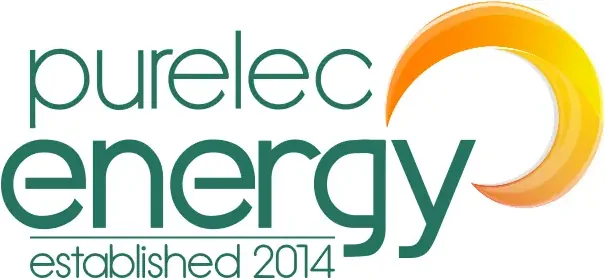
The latest addition to the Powerwall series, the Tesla Powerwall 3 brings significant advancements in the realm of home energy systems. And, as our Tesla-certified team is now delivering this technology to households across Yorkshire and the North of England, we thought it only right to explore the details.
Here, we outline the Tesla Powerwall 3 specs, compare Tesla Powerwall 2 and 3, and answer your frequently asked questions..
What is the Tesla Powerwall series?
The Tesla Powerwall series has transformed the way that homeowners utilise and store energy. From harnessing surplus electricity generated by solar panels to offering a reliable backup during grid outages, battery storage solutions such as Powerwall have become integral to achieving energy independence. Continuing Tesla’s mission to make clean energy available to all, the introduction of Powerwall 3 marks a significant leap forward.
Tesla Powerwall 2 vs 3 specs
| Feature | Tesla Powerwall 2 | Tesla Powerwall 3 |
| Storage capacity | 13.5kWH | 13.5kWh |
| Output power | 3.68kW or 5kW | 3.68kW – 11.5kW |
| Dimensions (L x W x D mm) | 1150 x 753 x 147 | 1098 x 609 x 193 |
| Integrated solar inverter | No | Yes (with 3 x MPPT) |
| AC/DC coupled | AC | AC or DC |
| Round trip efficiency | 90% | 97% |
| Backup | Compulsory | Compulsory (under review) |
| Warranty | 10 years | 10 years |
Tesla Powerwall 3 vs 2: Key difference
Despite being slightly smaller than its predecessor, the Tesla Powerwall 3 capacity is 13.5kWh – the same as the Powerwall 2. The key difference in performance between the two models comes in the form of improved power output. The Powerwall 3 can output a total of 11.5kW on both grid and backup power, whereas the previous model provides 5kW continuous power and 7kW peak power respectively. In the event of a power outage, this increase will allow users to run more appliances simultaneously, reducing disruption to day-to-day life.
Additionally, the Powerwall 3 is a hybrid solution that includes a built-in inverter with six solar inputs. This means solar panels can be connected directly rather than via an additional inverter, improving efficiency to an incredible 97.5%. The inclusion of maximum power point trackers on each of the inputs also improves system performance, optimising the power generation capabilities of your solar panels and mitigating the effects of shade. Altogether, this means Powerwall 3 owners will be able to utilise more of the power they generate and further reduce reliance on the grid.
One limitation we’ve identified is that it’s only possible to combine four Powerwall 3 units for a total capacity of 54kWh, whereas the Powerwall 2 could support 10 units for a capacity of 135kWh. For the vast majority of homeowners, this wouldn’t be an issue, as many see a single unit (13.5 kWh of storage) as sufficient for their energy needs. A recent update provided by Tesla has stated both models will be available simultaneously for now but the PW2 will be phased out. As certified Tesla Powerwall installers, we have the expertise to guide you on the right model for your specific needs, ensuring you get the best from your purchase.
Tesla Powerwall 3 FAQ
Now that we know the expected technical specifications and the differences between Powerwall 3 and its predecessor, it’s time to answer some frequently asked questions.
Is Powerwall 3 compatible with existing solar inverters?
The Tesla Powerwall 3 with solar panels is a match made in energy-storage heaven, and is compatible with existing inverters. In fact, it’s designed to work seamlessly with all major solar inverters, ensuring a smooth transition for those looking to upgrade their existing home energy systems.
Can Powerwall 3 be added to Powerwall 2?
Unfortunately not, the Powerwall 3 is only compatible with itself. However, if you’re looking to expand on an existing Powerwall 2 system, they’re still available in the UK for a short period of time. If you’re unsure whether to upgrade or remain with your current system, our team will be happy to advise – just get in touch.
What warranty does Powerwall 3 come with?
Understanding the importance of reliability, Tesla offers an 10-year warranty for the Powerwall 3. This commitment to quality provides peace of mind, assuring homeowners of the system’s durability and performance over time.
Can Powerwall 3 be installed outdoors?
The Powerwall 3 boasts impressive flexibility and can be mounted both inside and outside. It is water resistant and can withstand temperatures as low as -20ºC and as high as 50ºC, ensuring it can be integrated into virtually any British home.
Can Powerwall 3 charge my car?
The Powerwall 3 can serve as a sustainable energy source for charging electric vehicles. However, it is important to plan ahead and ensure you install the capacity you need, as electric car batteries can store 40kWh on average. This means you would need multiple Powerwall units to fully charge your car from empty using only stored energy.
Can I install Powerwall 3 without solar panels?
Whilst we would generally advise homeowners to install solar panels alongside battery storage, the Powerwall 3 still presents a valuable energy solution for homes without solar panels. This is because it is capable of utilising ‘time of use’ tariffs, such as Octopus Flux Tariff, for cost-effective energy storage and usage.
Ready to power up? Contact our team of Tesla Powerwall 3 UK installers and we’ll be happy to help.
